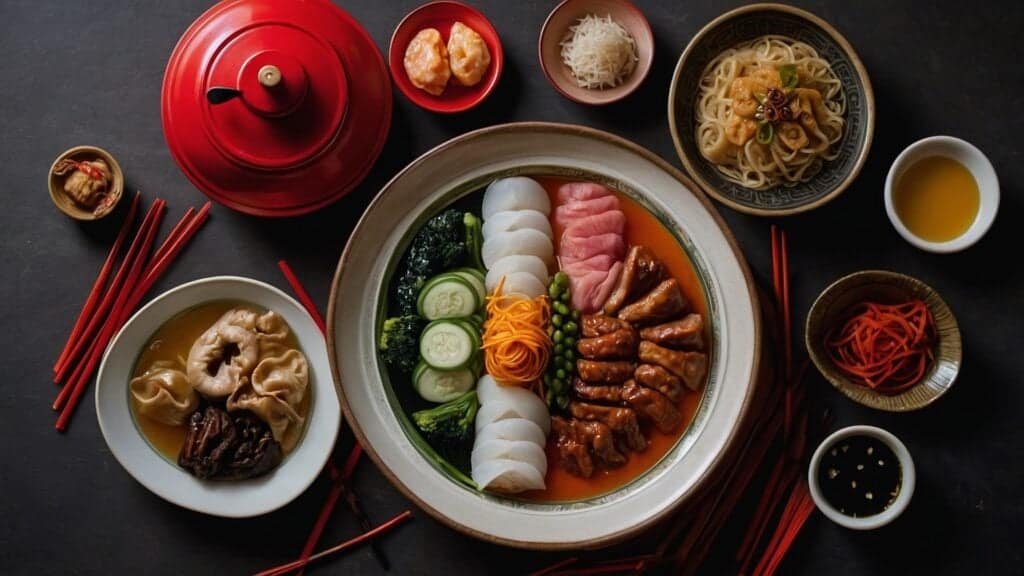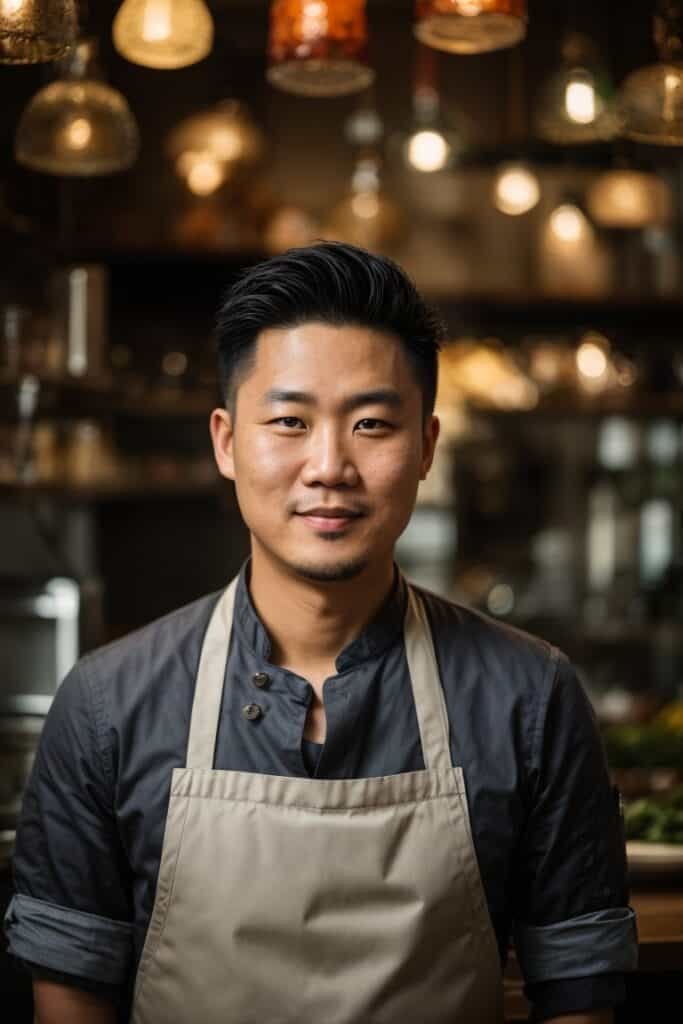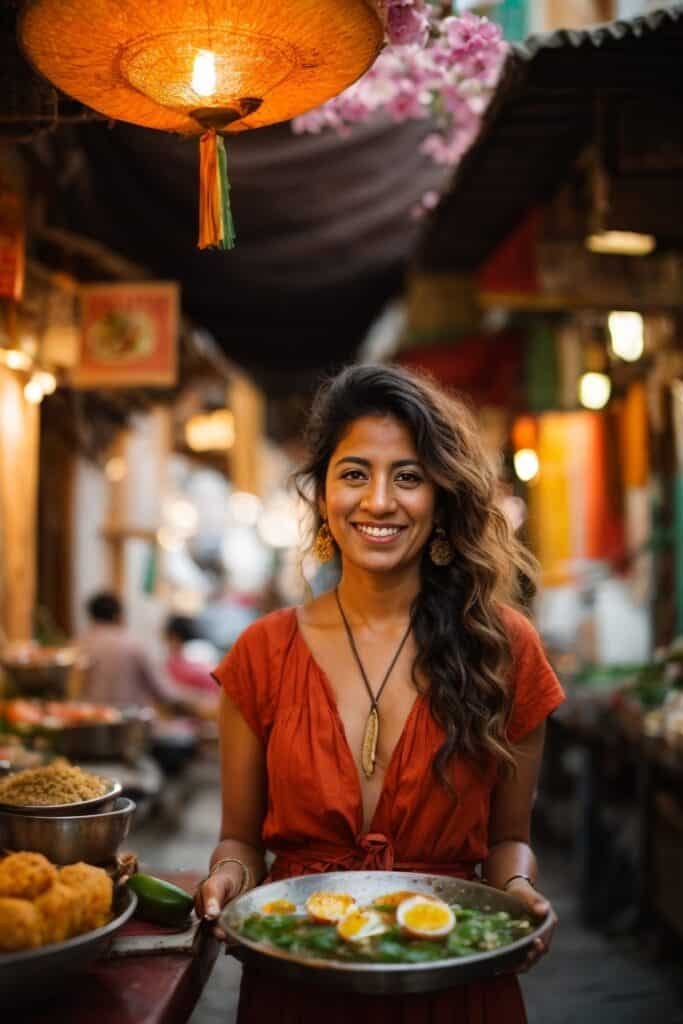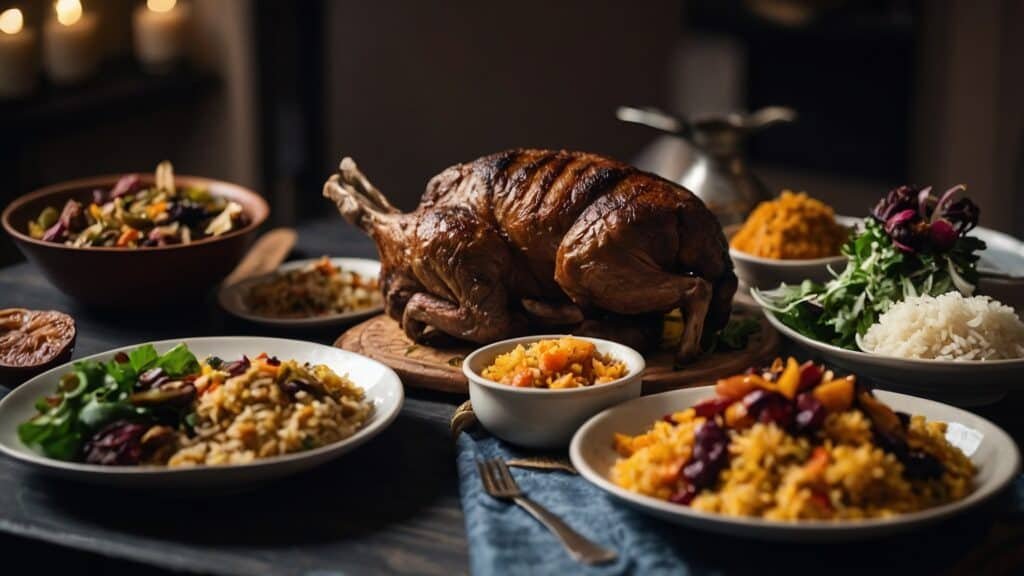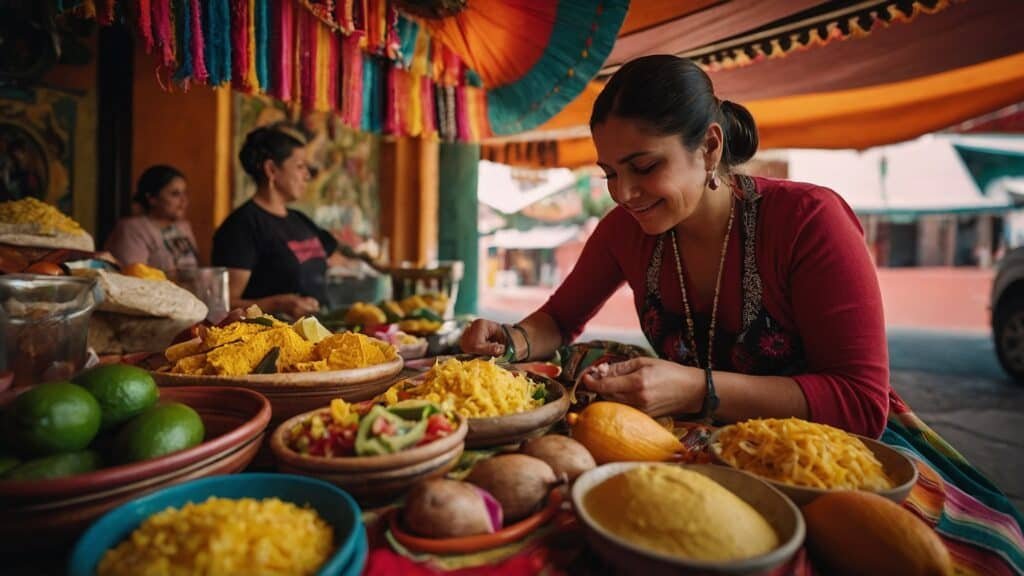Key Highlights
- The Lunar New Year, also known as the Spring Festival, is a 15-day festival that marks the beginning of the new year in the traditional Chinese calendar.
- It is an important vacation celebrated by Chinese and Sinophone communities around the world. Festivities include lion dances, dragon dances, fireworks, family reunions and much more.
- The festival is also celebrated in other Asian countries such as Korea, Vietnam and Japan, which each have their own traditions and customs.
- The Lunar New Year is a time to reunite and honor ancestors. Families come together to enjoy a special meal and exchange red envelopes with lucky money.
- The festival is also associated with the Chinese zodiac, with each year represented by a different animal sign.
- The Lunar New Year is a time of joy, renewal and good fortune. The celebrations last for 15 days and culminate in the Lantern Festival.
Introduction
The Lunar New Year, also known as the Spring Festival, is a lively and joyous celebration that takes place in many Asian countries. It is a time when families come together, honor their ancestors and welcome the new year with festivities, delicious food and colorful decorations. The Lunar New Year is not only an important vacation in China, but is also celebrated by Chinese and Sinophone communities around the world. The festival marks the beginning of the new year according to the traditional Chinese calendar, and each year is associated with a particular animal sign of the Chinese zodiac. From lion dances and dragon dances to fireworks and family reunions, the Lunar New Year is a time of renewal, good fortune and prosperity.
In this blog, we will look at the origins and significance of the Lunar New Year, explore the culinary traditions associated with the festival, learn about the unique regional celebrations and discover how to celebrate and decorate for the Lunar New Year at home. So let us dive into the vibrant world of Lunar New Year cuisine and celebrations!
Origins and significance of the Lunar New Year
The Lunar New Year has a rich history dating back thousands of years. It is believed to have originated in the Shang Dynasty in the 14th century BC and has been celebrated ever since. The festival marks the transition from winter to spring and is a time for families to come together, honor their ancestors and welcome the new year with joy and excitement. The Lunar New Year is not only a time of celebration, but also has deep cultural and spiritual significance for those who celebrate it.

The history behind the Lunar New Year
The origins of the Lunar New Year can be traced back to ancient Chinese mythology and folklore. A popular legend is the story of Nian, a terrifying monster that appears on the first day of the new year and devours people and livestock. To drive away this monster, the villagers decorated their houses with red paper, lit firecrackers and made loud noises to scare Nian away. This tradition evolved into the lively and festive celebrations we see today during the Lunar New Year, also known as the Spring Festival. On the last day of the 15-day celebrations, the Lantern Festival takes place, where lanterns of all shapes and sizes are lit to symbolize the way forward for the new year.
Meaning of the Lunar New Year in different cultures
Although the Lunar New Year is mostly associated with China, it is also an important vacation in many other Asian countries. Countries such as Vietnam, Korea and Japan have their own unique traditions and customs associated with the Lunar New Year. In these countries, the Lunar New Year is a time for families to come together, honor their ancestors and celebrate the start of a new year with joy and enthusiasm. The celebrations often include special meals, fireworks, dragon and lion dances and the exchange of gifts and red envelopes of money. The Lunar New Year is of great significance and importance in these cultures, as it represents new beginnings, good fortune and the opportunity to spend quality time with loved ones.
Culinary traditions for the Lunar New Year
Culinary traditions play an important role in the Lunar New Year celebrations. The festival is characterized by delicious and symbolic dishes that stand for luck, prosperity and promise. Families gather for special meals where traditional dishes such as dumplings, fish, spring rolls and rice cakes are served. These dishes are said to bring fortune and abundance for the coming year. The New Year is a time to indulge in delicious flavors and culinary delights that are deeply rooted in cultural traditions.
Essential dishes for the Lunar New Year
- Dumplings: They symbolize wealth and good fortune. They are often shaped like gold ingots, representing prosperity.
- Fish: Stands for wealth and abundance. It is customary to serve a whole fish as the centerpiece of the feast.
- Spring rolls: Symbolize wealth and prosperity as their shape resembles gold bars.
- Rice cakes: Also known as nian gao, these glutinous rice cakes symbolize progress, growth and a higher position in the new year.
- These must-try dishes are not only delicious, but also have a deep symbolic meaning that contributes to the festive atmosphere of the New Year.

Symbolism behind the Lunar New Year dishes
Food plays an important role in Lunar New Year celebrations, with each dish having its own symbolic meaning. Red paper decorations are often used to ward off evil spirits and bring good luck. Dumplings, for example, are shaped like ancient Chinese gold bars and are said to bring wealth and prosperity. Oranges and mandarins with their round shape and golden color symbolize luck and abundance. Noodles, which are served uncut, stand for longevity and are a popular dish on this festive day. These symbolic dishes not only contribute to the festive atmosphere, but also to fortune and happiness for the coming year.
The Lunar New Year is celebrated worldwide
The Lunar New Year is not only celebrated in China and other Asian countries, but around the world. It has evolved into a global celebration, with lively festivities taking place in various cities and communities. From lantern festivals in China to parades in Singapore and cultural performances in Vietnam, the Lunar New Year is a time when different cultures come together to celebrate and share their traditions. The festival provides an opportunity to experience the richness and beauty of different cultures, making it a truly global celebration of unity and joy.
Unique regional celebrations
- Lantern Festival in China: The Lantern Festival marks the end of the Lunar New Year celebrations. It is a time when beautifully crafted lanterns are displayed and lit, creating a magical atmosphere. Lantern parades, lion dances and other cultural performances take place, attracting thousands of visitors.
- Tet Festival in Vietnam: Tet is the Vietnamese version of New Year. It is a time for family reunions, paying homage to ancestors and enjoying traditional foods such as banh chung (sticky rice cakes) and mut (candied fruit). Festive activities include dragon dances, fireworks and temple visits.
- Seollal in Korea: Seollal, the Korean New Year, is a time for families to come together and honor their ancestors. Traditional customs include wearing hanbok (traditional clothing), performing ancestral rites and playing traditional games such as yut nori. The vacation is also known for its delicious food, including tteokguk (rice cake soup) and jeon (savory pancakes).
How the Lunar New Year is celebrated in different countries
The Lunar New Year is celebrated in various countries with large Chinese communities and has become an important cultural event. In Singapore, the celebrations include colorful street decorations, lion dances and festive markets. In Malaysia, families gather for a reunion dinner and visit temples to be blessed. In Indonesia, Chinese communities celebrate with dragon and lion dances, fireworks and cultural performances. In all these countries, the spirit of the New Year is kept alive through traditional customs such as the distribution of red envelopes, house cleaning and the preparation of special dishes. It is a time for families to come together, honor traditions and start the new year with joy and happiness.
DIY Lunar New Year recipes
Celebrate the Lunar New Year at home by trying your hand at traditional recipes. From making dumplings to preparing a feast, there are many delicious dishes to discover. Learn how to fold dumplings and create your own fillings with ingredients such as pork, prawns or vegetables. Conjure up a spring roll feast with crispy wrappers and savory fillings. Don’t forget to serve a hearty bowl of rice cake soup that symbolizes unity and happiness. With these homemade recipes, you can enjoy the flavors of the New Year and create lasting memories with family and friends.

Step-by-step instructions for making dumplings
Making dumplings is a fun and delicious way to celebrate the New Year. Here is a step-by-step guide to help you make the perfect dumplings:
- Prepare the filling: Combine minced meat (e.g. pork or chicken), finely chopped vegetables and spices in a bowl. Mix well until the ingredients are evenly distributed.
- Make the dumpling casings: Combine the flour and water to make a dough. Knead until it’s smooth and elastic. Roll out the dough and cut into small circles using a round cutter.
- Fill the dumplings: Place a spoonful of filling in the center of each wrapper. Fold the dumpling in half and press the edges together to seal. You can also try different folding techniques to add a decorative touch.
- Cook the dumplings: Bring a pan of water to the boil and add the dumplings. Cook them until they float to the surface, which means they’re cooked. Remove from the water and serve hot with dipping sauces.
Enjoy the homemade dumplings with family and friends and indulge in the delicious flavors of New Year.
The perfect New Year’s feast at home
A New Year’s feast at home is a wonderful way to celebrate the festival with your loved ones. Here are some tips to help you create the perfect New Year’s feast:
- Plan your menu: Choose traditional New Year dishes such as fish, dumplings, spring rolls and rice cakes. Also think about other festive dishes that have special meaning for you and your family.
- Decorate your room: Use red and gold decorations to create a festive atmosphere. Hang red lanterns, lay out paper cut-outs and set the table with red tablecloths and auspicious tableware.
- Commit to traditions: Incorporate customs such as handing out red envelopes, lighting firecrackers and prayers to ancestors. These traditions add depth and meaning to your celebration.
- Divide the work: Encourage family members and friends to contribute their own dishes to the feast. This not only takes the pressure off you, but also creates a sense of community and togetherness.
By following these tips, you can host a memorable New Year’s feast that brings joy, abundance and happiness to everyone gathered around the table.
Lunar New Year decorations and their meanings
Lunar New Year decorations play an important role in creating a festive and auspicious atmosphere. Here are some popular decorations and their meanings:
- Red lanterns: they symbolize good luck, prosperity and ward off evil spirits.
- Red paper cut-outs: Stand for happiness, prosperity and protection from evil.
- Couplets: Consist of two poetic lines containing good wishes for the New Year and are placed on doors as good luck charms.
- Peonies: Symbolize wealth, honor and prosperity.
- Kumquat trees: Stand for luck, wealth and happiness.
These decorations not only beautify the surroundings, but also carry deep symbolic meanings that bring blessings and good fortune for the New Year.
Decorating for prosperity and good fortune
Decorating your home for the Lunar New Year is a wonderful way to bring prosperity and good fortune to your space. Red is the predominant color as it symbolizes luck and happiness. Hang red pieces of paper on your doors and windows to ward off evil spirits and attract good luck. Place red lanterns in your home to spread brightness and joy. Place fresh flowers and blooming plants such as peonies and kumquat trees to symbolize prosperity and growth. With these traditional decorations, you not only create a festive ambience, but also reinforce the positive energy and blessings that the New Year brings.
DIY decoration ideas for the Lunar New Year
Looking for DIY decoration ideas for the Lunar New Year? Here are some creative and fun ideas:
- Red envelopes: Create your own red envelopes by cutting red paper into rectangular shapes and folding them. Add decorative elements such as gold accents or Chinese characters for good luck.
- Paper lanterns: Make colorful paper lanterns from red, gold and yellow paper. Cut out patterns or Chinese characters to give them a festive touch.
- Flower arrangements: Collect fresh flowers such as peonies or orchids and arrange them in vases or decorative pots. Add lucky charms or red ribbons to give it an extra touch of happiness.
- Window decorations: Cut out intricate paper cutouts of animals, flowers or lucky symbols and tape them to your windows to create a vibrant and festive look.
These homemade decorations not only add a personal touch to your New Year celebrations, but also serve as meaningful symbols of good luck and prosperity. Get creative and have fun!
Lunar New Year celebrations and activities
The Lunar New Year is a time of joy and celebration with a variety of festivities and activities for you to immerse yourself in. From traditional rituals and cultural performances to modern events and family activities, there is something for everyone. Take part in the exciting lion and dragon dances, visit temples to pay homage to ancestors, participate in lantern festivals and enjoy delicious traditional food. Take part in family activities such as crafts and storytelling or join in community parades and street festivals. The Lunar New Year Festival offers countless opportunities for fun, togetherness and cultural enrichment.

Traditional and modern ways of celebrating
Lunar New Year celebrations have evolved over the years, blending traditional customs with modern forms of celebration. While some people prefer to stick to old traditions, such as cleaning the house, saying prayers and celebrating family reunions, others enjoy new activities and events that cater to modern tastes. Modern New Year celebrations often include music concerts, dance performances and art exhibitions that add a modern flair to the festivities. Whether you choose a traditional or modern way of celebrating, the spirit of the Lunar New Year remains the same – joy, togetherness and the hope for a prosperous and happy new year.
Family activities for the Lunar New Year
The Lunar New Year is a time for families to come together and celebrate. Here are some fun activities you can enjoy with your loved ones:
- Reunion dinner: Prepare a special feast of traditional dishes and eat together with your family members. Cooking together can be a bonding experience.
- Red envelope game: Hide red envelopes filled with small gifts or money around the house and let the children search for them. This brings excitement and joy to the party.
- Crafting and decorating: Get creative and make decorations such as paper lanterns, couplets or even dragon puppets. This way, everyone can contribute to the festive atmosphere.
- Cultural performances: Attend local New Year events with lion dances, dragon parades and traditional music and dance performances. This is a great way for the whole family to experience the rich cultural heritage of the festival.
These family activities create lasting memories and strengthen the bond between loved ones during this special time of year.
Conclusion
Lunar New Year celebrations bring joy and unity to all cultures. From the tasteful symbolism of traditional dishes to the colorful decorations, every aspect is a celebration of new beginnings and prosperity. Immerse yourself in the rich diversity of New Year traditions around the world and be enchanted by the culinary delights and festive activities to mark this auspicious occasion. Whether you’re making dumplings at home or learning about regional customs, the spirit of the New Year is all about togetherness and happiness. Let’s embark on this cultural journey with zest and zeal and enjoy every moment of this joyous time!
Frequently asked questions
What is the difference between Lunar New Year and Chinese New Year?
The terms Lunar New Year and Chinese New Year are often used interchangeably to refer to the same vacation. Lunar New Year is a broader term that encompasses the celebration in various Asian countries, while Chinese New Year refers specifically to the celebration in China.
Can you make Lunar New Year dishes vegetarian or vegan?
Yes, New Year dishes can be made vegetarian or vegan by replacing meat and animal products with plant-based alternatives. Traditional dishes such as dumplings and rice cakes can be adapted to a vegetarian or vegan diet so that everyone can enjoy the festive flavors.
How long does the Spring Festival last in China in 2024?
In 2024, the Spring Festival in China begins on Saturday, February 10, and culminates with the Lantern Festival on Saturday, February 24. The festival traditionally lasts 15 days, with each day filled with joyous celebrations and cultural traditions.
What do you eat for Chinese New Year?
During Chinese New Year, people enjoy a variety of traditional foods that are said to bring good luck and prosperity. Popular dishes include dumplings, fish, spring rolls, rice cakes and sweet treats. These dishes symbolize abundance, wealth and happiness for the new year.
Do the ingredients or dishes eaten for the Lunar New Year have a symbolic meaning?
Yes, many ingredients and dishes for the Lunar New Year have a symbolic meaning. Fish, for example, stands for abundance and prosperity, while dumplings symbolize wealth and good fortune. Each dish is carefully chosen to bring blessings and positive energy for the new year.
Can you give any tips for hosting a New Year’s feast or celebration at home?
Certainly! If you are hosting a New Year’s celebration at home, plan your menu with traditional dishes, adorn with red and gold decorations and include customs such as handing out red envelopes. Ask family members and friends to contribute dishes and create a happy and festive atmosphere for everyone to enjoy.

